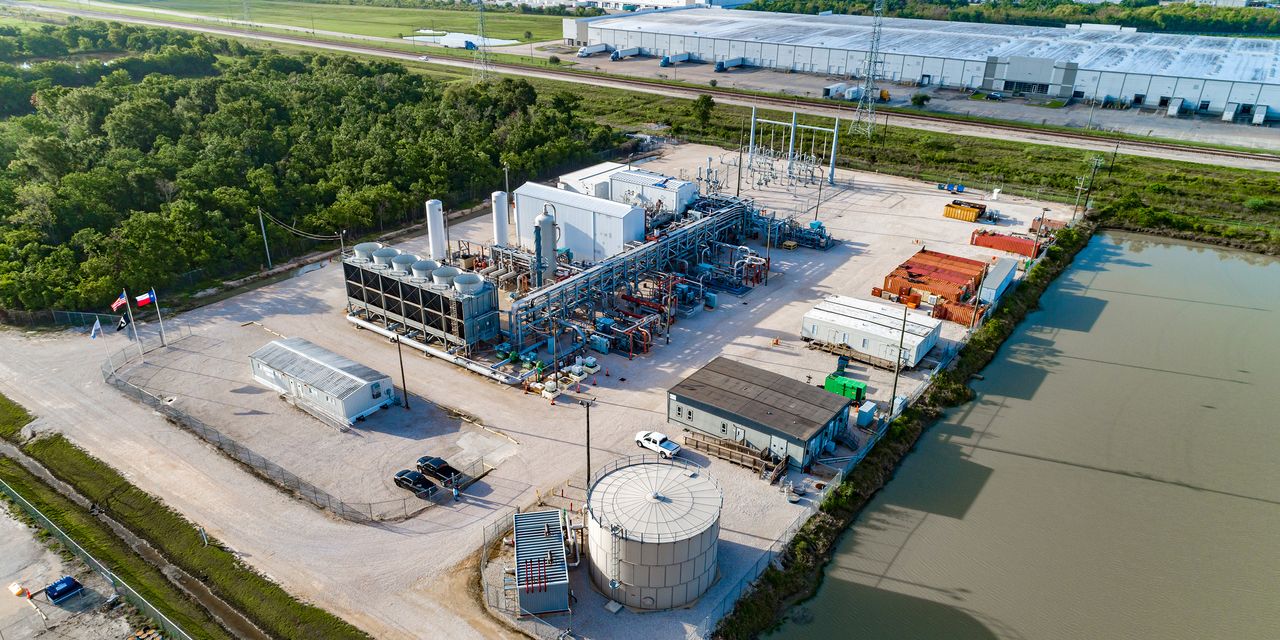“Carbon capture” looks like it will be an important part of a clean-energy future—and NET Power’s stock is a solid way to play it.
NET Power (ticker: NPWR) is an unusual clean-energy company that has developed a natural-gas power plant that makes it easy to capture carbon dioxide released by the burning of natural gas. Unlike current plants, which burn natural gas in the air and produce pollutants like nitrogen oxides as well as CO2, NET Power’s method produces emissions of only CO2 and water. The plants burn natural gas in pure oxygen, and the resulting high-pressure, liquefied CO2 spins turbines to make electricity. The CO2 is then buried or used for energy production.
The company went public this past week when it merged with Rice Acquisition II, a special-purpose acquisition company, or SPAC, formed by Danny Rice, an entrepreneur, energy executive, and member of the well-regarded energy-focused Rice family. Danny’s brother Toby Rice heads
EQT
(EQT), the top gas producer in the country.
NET Power had a strong debut, as its stock rose to $14.61 on June 9, its first day as an independent company, up from $10.34 a week earlier when it traded as a SPAC.
The company raised more than $675 million in the SPAC transaction and is now valued at some $3.1 billion. The float, however, is relatively small at 15 million shares, out of 211 million outstanding, which has contributed to the upside volatility. The company emerged with nearly $650 million in cash and no debt.
| Recent Price | $14.61 |
| Market Value (bil) | $3.1 |
| Net Cash (mil) | $645 |
| Float | 15 million shares |
| Key Shareholders | Rice Family; Occidental Petroleum |
Source: company reports
At this point, NET Power is more of a concept company. NET Power has minimal revenue, operates just one small demonstration plant in Texas, and its first utility-scale plant in Odessa, Texas, won’t be completed until 2026. What’s more, its technology is unproven on a large scale, and its plants, at about $900 million each, cost significantly more to build than traditional gas plants.
As noted, NET Power went public as a SPAC, which have been tainted by many disastrous deals.
See All the Stocks We’re Bullish—and Bearish—On
That shouldn’t matter, however, given the quality of its merger partners and investors. NET Power’s first plant will be operated by
Occidental Petroleum
(OXY), which purchased $350 million of stock as part of the deal. Meanwhile, CEO Danny Rice’s first SPAC merged with renewable fuel maker Archaea Energy in 2021 and was later bought by
BP
(BP) at more than 2½ times the original SPAC price. Investors are hoping that something similar could happen to NET Power.
NET Power may need more money to build its first few plants, but the model is to license its technology and collect royalty revenue. And with carbon credits included in the 2022 energy bill, operating costs are expected to be low. Rice’s goal is to license 30 plants a year by 2030. NET Power hasn’t provided financial guidance but offered “illustrative” financials indicating that it could generate over $1 billion annually of earnings before interest, taxes, depreciation, and amortization, or Ebitda, five years after deploying the plants.
“NET Power hits the trifecta of delivering reliable, affordable, and clean power from natural gas,” Rice says.
Paul Sankey of Sankey Research called the company an energy “NVDA,” a reference to chip maker
Nvidia
(NVDA), and set a 2030 price target of $100. The company “as a natural-gas-fired, steady-state emissionless provider of baseload power could be a tailor-made solution to the growing challenges across the U.S. power grid,” he writes.
It’s a risky bet, but one that looks worth making.
Write to Andrew Bary at [email protected]
Read the full article here













